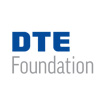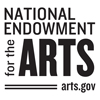
Creativity Q+A with Bob Downes
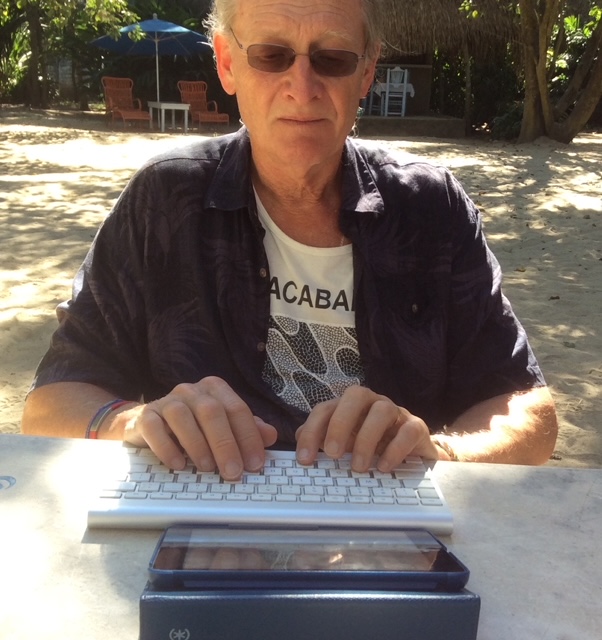
Bob Downes, 69, “always wanted to be a novelist.” And, that is what he became. Bob Downes is the essence of peripatetic. The author of seven books, many of which were written on the move around the globe, calls Traverse City his home base. He is as inspired by writers from the canon as he is by the creative energy of iconic Michigan musicians. He has written for hometown weeklies, corporate healthcare, and helped birth an alternative newsweekly that endures. Read all about it. And, him. This interview took place in December 2021. It was conducted by Sarah Bearup-Neal, GAAC Gallery Manager, and edited for clarity.
What draws you to the medium in which you work?
I’ve wanted to be a writer since I was a teenager. I majored in journalism in college, and have been writing for all of my adult life.
What was it, when you were a teenager, that put this idea in your head?
I read a great deal as a child. I probably read more books than any kid I ever met. We had a summer reading program every year, and I always read way more books than anyone else.
It was the act of reading that ignited your interest in the act of writing?
I thought of myself as a storyteller even when I was a child.
How did your formal training affect your development as a creative practitioner?

I always wanted to be a novelist, even in college; but I thought I’d take the Ernest Hemingway route, and get a newspaper job, as a bread-and-butter job to get me through until I started writing The Great American Novel. Journalism was my gateway drug.
You like to write in libraries and coffee shops. Why?
It gets you out of the house. It gets very boring sitting around the house all the time. For whatever reason, those [places] feel like comfortable spaces to write in.
I’ve often wondered if the clanking coffee cups, and the whirring ceiling fans, and all the conversation sounds in these public spaces end up being white noise?
When you’re a newspaper reporter, like I was for 30 years, you get used to working in very noisy newsrooms, and you just blank that out. I do have a home workspace where I do my marketing and press releases, and things like that. It’s my Command Module. It’s about 6 ft. x 6 ft. And it has two computers, and an iPad.
What newspapers did you work for?
I was editor of Orion Review in Lake Orion [Michigan]. Then I worked as a stringer for the Detroit Free Press. Then I was a reporter for the Birmingham Bloomfield Eccentric, and the Pontiac Waterford Times … That was in the late 70s, early 80s, and then I came to Traverse City to be the publications specialist at Munson Medical Center for 10 years … I was the whole meatball: I did all the writing, all the photography, all the editing and also all the press relations for Munson. I was ultimately in charge of seven publications there, including the annual report.
You’ve had a lot of in-the-trenches journalism experiences — along with corporate journalism experience.
Yes. And I was probably least likely to succeed in my journalism class at Wayne State University [graduating in 1976 with a degree in journalism, and a minor in photography].
You’ve written that you’ve completed several manuscripts on an iPad, wintering in the tropics. Talk about working any place you can plug in vs. having a designated, stationary work space.
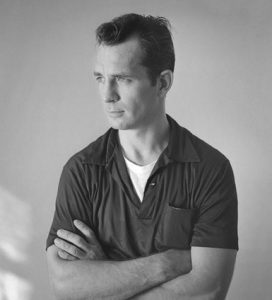
I’ve completed several books on my iPad or on a lap top in Mexico, Guatemala. I think I finished Windigo Moon in San Marcos, Guatemala. And then I finished Bicycle Hobo in Mexico. Biking Northern Michigan I started writing in Costa Rica. When you’re writer, you can write anywhere. I’ve met people who want to become writers, and they say, ‘First, I’ve got to get a computer to write on.’ I tell them, ‘No. All you need is a pencil and a piece of paper.’ That’s all you need. When I wrote Planet Backpacker, I did what Jack Kerouac did. I just scribbled down notes on napkins and scrap paper while I was going around the world, and then I’d write [a blog post] every chance I got at an internet cafe. That’s what Jack Kerouac did when he wrote On The Road. Just with little scraps of paper he’d stuff in his backpack. He put it all together in one manic writing spree.
Being untethered to a stationary work space doesn’t seem to be an impediment to your production.
No. I’m extremely enthusiastic about whatever I’m writing, so the whole world disappears. In my two books about native people* I just completely disappear into the 1500s. It’s like I’m really there going down the Mississippi, or walking through the forests of upper Michigan with those characters.
*Follow-up | Bob writes: “ ‘Windigo Moon’ is about the Ojibwe and a little bit about their relations, the Odawa, with both tribes also known as the Anishinaabek. My new book, ‘The Wolf and The Willow’ features the same tribes, but also has chapters relating to the Dakota Sioux, the Caddo, Cahokians, Tobacco People, Haudenosaunee, Mandans and Mauvilans.”
Talk about the themes and ideas that are the focus of your work?
My themes always relate to adventure; but I seem to find a lot of inspiration from unrequited love; justice and retribution, and their cousin, revenge; and some aspect of romance related to adventure.
How many of these themes are drawn from your own experience?
 I’ve certainly had unrequited love in my life. And, I’ve certainly had a great deal of adventure: backpacked around the world twice, bicycled 5,000 miles across North America and much of Europe, backpacked through all the wilderness lands of the Ojibway*. I have a very strong sense of retribution. I’ve sent two people to prison who crossed my family, which I won’t go into; but it was me, the point man, who sent them there. Don’t get me mad.
I’ve certainly had unrequited love in my life. And, I’ve certainly had a great deal of adventure: backpacked around the world twice, bicycled 5,000 miles across North America and much of Europe, backpacked through all the wilderness lands of the Ojibway*. I have a very strong sense of retribution. I’ve sent two people to prison who crossed my family, which I won’t go into; but it was me, the point man, who sent them there. Don’t get me mad.
*Follow-up | Bob writes: “Throughout northern Lower Michigan and the Upper Peninsula, and also north to Agawa in Ontario, along with Isle Royale and Upper Minnesota.”
Bob, you’re the embodiment of writing what you know.
Every writer is basically writing about some aspect of their personality. It’s not necessarily you; but it’s all drawn from your subconscious, your experience.
What prompts the beginning of a project?
Your subconscious. I’ll spend as much as several years writing a book in my head before I write anything at all. And then, you start writing, and think you know what the story is going to be, and your characters take over and take it in different directions. My latest book, The Wolf and the Willow, I thought certain characters were going to pass away, and they did not. They surprised me, and made it a better book.
I’m thinking of that phenomena, of the writing taking on a life of its own. The tail wagging the dog.
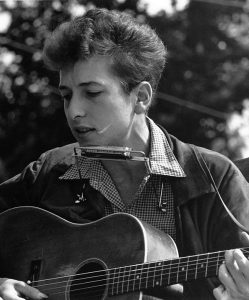
I don’t hear you say you feel like you’re taking dictation.
No. You’re taking inspiration.
How much pre-planning/research do you do in advance of beginning a new project?
For the historical novels I’ve had a very deep dive into the history of native peoples and anthropology. I have a collection of 50 books [on both subjects]. And, of course, I’ve studied many, many others. This current book [The Wolf and the Willow] delves into the conquistadors, so I did a lot of research into them. I’ve generally visited every place I write about so I have a sense of that place. My current book, one of the key locations in it is the Great Pyramid in Cahokia in southern Illinois. I’ve been there, climbed to the top of this pyramid, been to many mound-builder sites … A lot of these place I write about I have first-hand knowledge of them in addition to reading history books …
You’re writing about things that happened in a time well before the present. So, when you’re in Illinois and looking these places, there’s a strip mall and a Wal Mart: How are you able to push the current time aside so that you can see back in time?
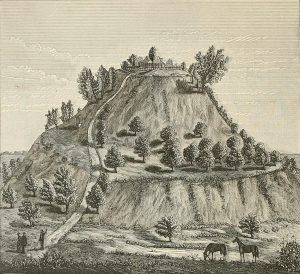
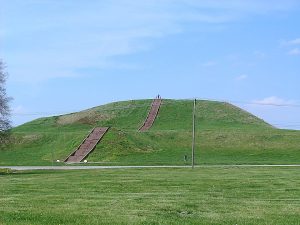
What’s your favorite tool associated with your creative practice?
My iPad, and the subconscious mind.
Are there other objects you use to make notes and record thoughts about your work?
I do a great deal of bicycle riding. When you’re in a zone like that, you often come up with scraps of dialogue or inspiration. So, I’ll stop and will record on my phone what that message is. Your mental process switches brain hemispheres when you’re doing something repetitive like running or biking or meditation. I find that to be true. Some of my best insight come when I’m riding my bike, and I have to stop and record them.
When did you commit to working with serious intent?
I’ve always been one to get knuckled down and get things done. I don’t get writer’s block because I don’t work on things I not inspired about … There are times when I jump out of bed at 5 am and I can’t wait to get writing. I’ve always written with “serious intent” because I’m energized by it, and inspired.
What role does social media play in your practice?
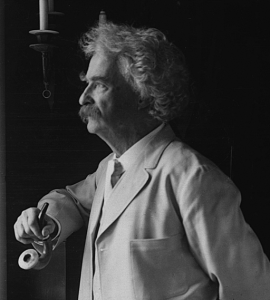
What’s social media’s influence on the work you make?
Nothing at all. I write for myself. I don’t think, “Grandma is going to be reading this, I’d better not say that.” I write what I like and find interesting.
What do you believe is the creative practitioner’s role in the world?
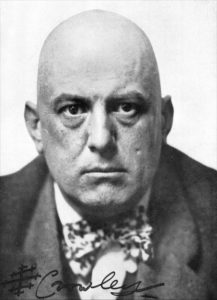
Aleister Crowley, who was a practitioner of the occult most famously, I think he considered himself a sorcerer of sorts, he said, “Do what thou wilt shall be the whole of the law.” To boil that down: Do your own thing. Be true to your own self. Any artist who really succeeds is true to that. They have their own vision, and follow it over the cliff if they need to. They don’t pander to what the popular taste might be.
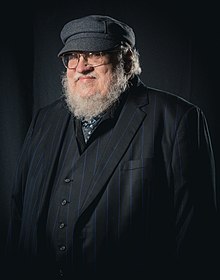
How does living in Northern Michigan inform and influence your creative practice?
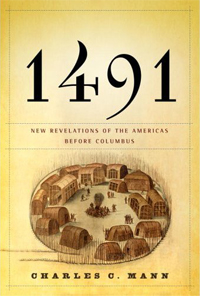 For one thing, I got very interested in native peoples … When I was a child I lived on my grandfather’s farm outside Rockford [Michigan], and my dad had plowed up scores of arrowheads and Indian artifacts in our fields. I grew up with the idea we had countless more native peoples here than we could possibly imagine, and that was true. I grew up reading all about the Indians. When books like 1491 [New Revelations of the Americas Before Columbus] came out, you discover that there had been 50 million native people living in North and South America, and 95 percent of them had been wiped out by disease. Their fabulous civilizations passed away. What we seen now are the refugees and reorganizers of those civilizations. Living in this area inspired me to write more about them. Having done a lot of backpacking and endurance sports, and some pretty rough camping adventures, I was always in awe that they could survive in this relatively harsh environment. I started out writing a short story for my own entertainment in 1990 about an Ojibway hunter pursued by his mortal enemy in a terrible winter. Twenty-five years later we sold The Express and I got to wondering about that hunter, who his family was, who he loved, so I wrote another story, just for fun, never planning to publish it. My daughter told me there was a writing contest tied to the [2014] Art Prize in Grand Rapids. I threw it in the mail, and was astounded to find that I won first prize for that story. That became the first chapter in Windigo Moon.
For one thing, I got very interested in native peoples … When I was a child I lived on my grandfather’s farm outside Rockford [Michigan], and my dad had plowed up scores of arrowheads and Indian artifacts in our fields. I grew up with the idea we had countless more native peoples here than we could possibly imagine, and that was true. I grew up reading all about the Indians. When books like 1491 [New Revelations of the Americas Before Columbus] came out, you discover that there had been 50 million native people living in North and South America, and 95 percent of them had been wiped out by disease. Their fabulous civilizations passed away. What we seen now are the refugees and reorganizers of those civilizations. Living in this area inspired me to write more about them. Having done a lot of backpacking and endurance sports, and some pretty rough camping adventures, I was always in awe that they could survive in this relatively harsh environment. I started out writing a short story for my own entertainment in 1990 about an Ojibway hunter pursued by his mortal enemy in a terrible winter. Twenty-five years later we sold The Express and I got to wondering about that hunter, who his family was, who he loved, so I wrote another story, just for fun, never planning to publish it. My daughter told me there was a writing contest tied to the [2014] Art Prize in Grand Rapids. I threw it in the mail, and was astounded to find that I won first prize for that story. That became the first chapter in Windigo Moon.
Is the work you create a reflection of this place? How would we see this?
Oh yeah; but a reflection of it in the 1500s.
Would you be doing different work if you did not live in Northern Michigan?
Just different subjects.
Did you know any practicing writers when you were growing up?
No. Just through their books. I did know my Uncle John [Downes], who was a poet. He wrote thousands of poems. I published a chap book for him called The Heartland. He lived on our family farm outside Rockford.
Who has had the greatest and most lasting influence on your work and practice?
Uncle John. I would never have been able to go to college. He and my Aunt Lillian paid my way through college. I was a very rough-around-the-edges, stoner kid at that time, in and out of scraps with the law. Not really very together; but he continued to have faith in me, and they put me through Wayne State University, and inspired me to write.
On paper, you don’t sound like a very good investment for your aunt and uncle.
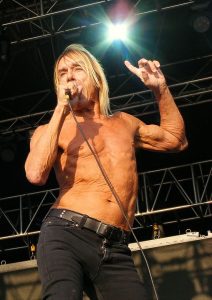
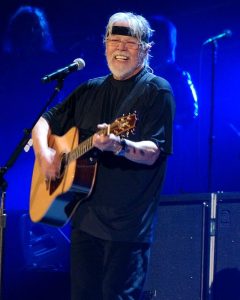
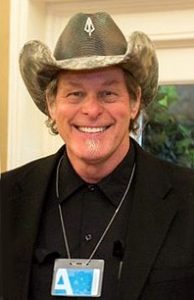
Where or to whom do you go when you need honest feedback about your work?
My wife [Jeannette Wildman] will always tell me what I’ve written is crap.
What gives her so much authority?
Well, she’ll just tell me something isn’t good. I had a literary agent I sent things to, and he would tell me the work wasn’t strong enough.
Besides working for Munson Medical Center, you had another, notable day job.
We [Bob and his business partner George Foster] sold The Express eight years ago. Back then I wasn’t writing anything. I did write Planet Backpacker while I was at The Express; but otherwise …. I was just focusing on writing the paper. It wasn’t until after we sold the paper got involved with writing book. And to this day, I still think of that as a hobby. It’s nothing you’re going to make a living at.
How does – or did — your day job cross-pollinate with your studio practice?
They were two different things. I segued from the paper to the authorship thing. I wasn’t really being an author when I was at The Express. After we sold the paper I was looking for something to do, and I thought I’d gamble on writing books for five year, which has turned into 10. Now I’m starting to find a little bit of success with it.
Read more about Bob Downes here.
Sarah Bearup-Neal develops and curates Glen Arbor Arts Center exhibitions. She maintains a studio practice focused on fiber and collage.





